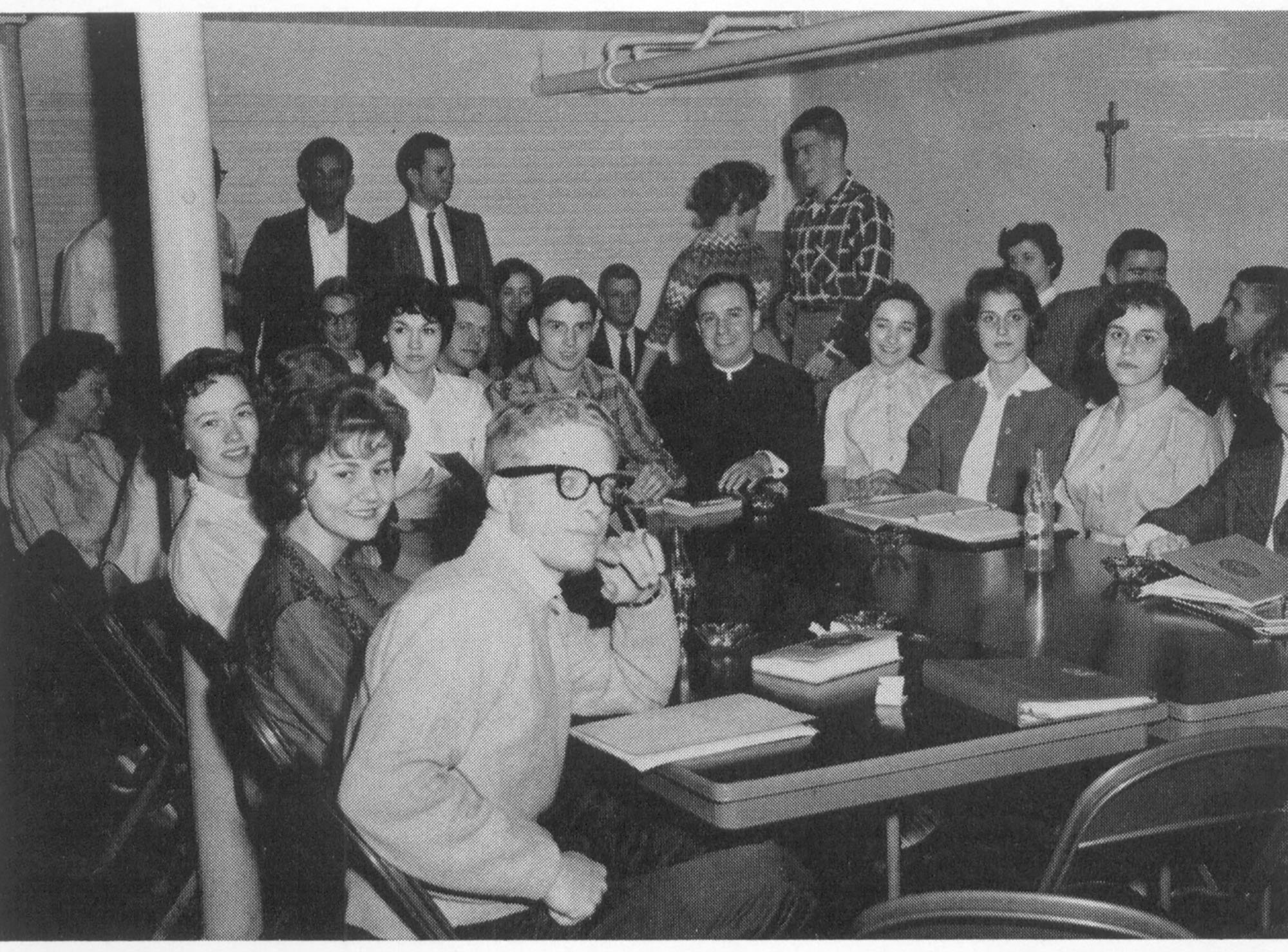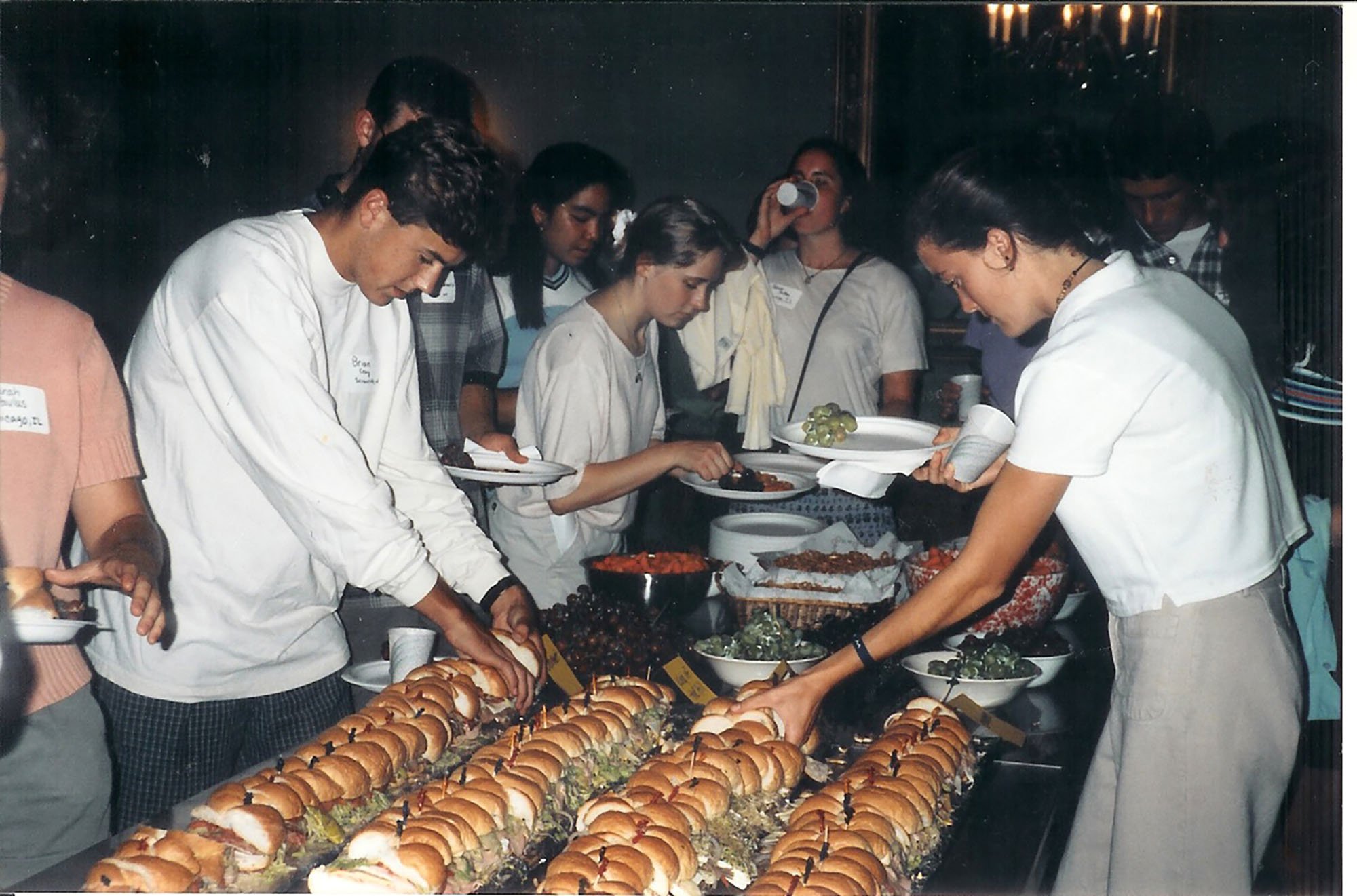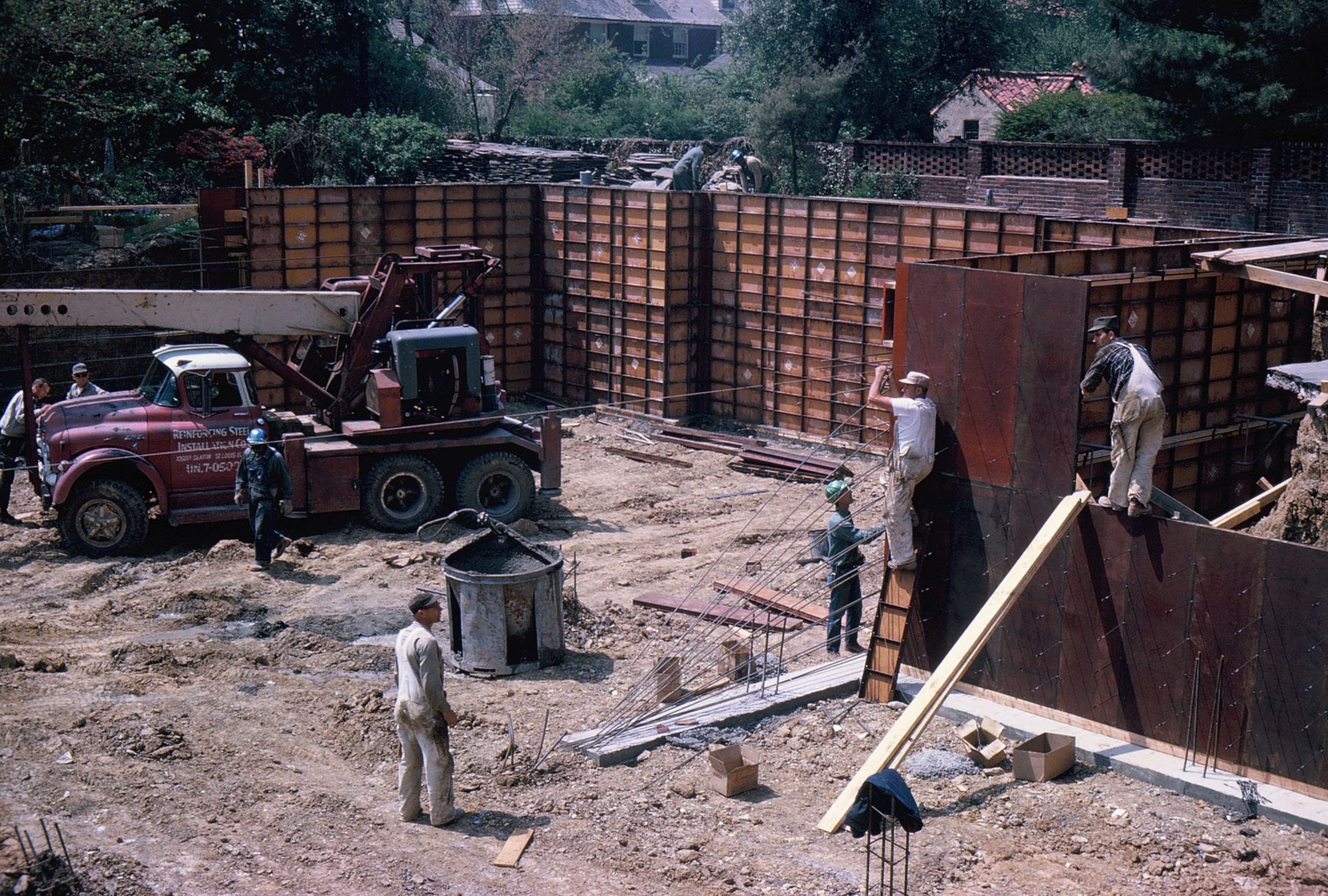
History of the
Catholic Student Center
The Washington University Newman Community
The Catholic Student Center at Washington University began as a study club of Catholic students in 1927. The group was officially approved as a Newman Club in 1948 and initially met in the basement of Our Lady of Lourdes Catholic Church, just down the street from today’s CSC location on Forsyth Blvd.
In 1950, Monsignor Gerard N. Glynn was appointed to head the Newman group. The original center consisted of religious, educational, cultural, and social activities for nearly 1,000 Catholic Washington University students.
With the help of generous sponsors, Msgr. Glynn purchased the current residence of the Catholic Student Center in 1956. Just four years later, the Newman community grew to serve 2,500 students from Washington University, Harris Teachers College, Central Institute for the Deaf, St. Louis College of Pharmacy, Lindenwood College, Barnes and Jewish Hospital medical center and nursing schools, and the Missouri Extension Community College in Normandy.
Monsignor Glynn retired in 1989 and was briefly replaced until Father Gary Braun was appointed Chaplain/Director in 1991.
Fr. Gary made a significant impact not only to the appearance of the center but also to the way it was utilized. He replaced the "Newman Center'' lawn sign with one that reads "Catholic Student Center." He also opened the lower level and first floor to 24-hour access for students. His homilies drew many non-students and many non-Catholics from across the St. Louis area to the Catholic Student Center. These friends of the CSC became a tremendous base of support for its mission.
Following a storied 32 years of service to the Catholic Student Center/Newman Community at Washington University, Fr. Gary retired from his leadership role and was succeeded by Fr. Brian Fallon in 2023.







The CSC Building
The building we know today as the Catholic Student Center was once a residential property originally built in 1910. The house was designed by Maritz & Young Architects with many design features that remained popular in St. Louis after the 1904 World’s Fair. The home’s owner was George Taylor who married a young woman named Ida Howe. Ida’s brother James Howe, a pharmacist, is credited for developing the antacid, TUMS, to treat his wife’s indigestion. Together with his uncle, A.H. Lewis, they formed the Lewis-Howe Company in 1930 and marketed TUMS for almost 50 years until it was sold in 1978.
One of James Howe’s grandsons recalled memories of visiting the house where a special treasure to him was a suit of armor in the front hall. A family friend nostalgically remembers “... at Christmas the house was filled with music from the grand piano in the stairway hall. The acoustics were incredible.”
The Taylor Family ownership of the property ended when it was purchased by Elmer J. and Susan Steger from whom it was later acquired to be used as the Newman Center for students at Washington University.
In 1964, a new wing adjoining the southwest corner of the original building was completed. This wing extended over the spacious gardens, some of which still remain on the south side of the present chapel. The addition consisted of offices, meeting spaces, and our chapel, dedicated to the Sacred Heart. Two additional renovations of the facility were undertaken in 2005 and 2021.







The Chapel Mural and Artist Edward Boccia
The mural on the front wall of our chapel was commissioned by Monsignor Glynn and painted by the artist Edward Boccia (1921-2012). The stained glass windows and stations of the cross in the chapel were also created by Boccia, who was known for his large-scale, multi-panel oil paintings in the neo-expressionist style.
During WWII, Boccia was a member of the infamous “Ghost Army” whose artistic ingenuity allowed them to deceive Hitler’s forces as to the size and scale of the Allied army’s ground power. The unit used theatrical effects including inflatable tanks, fake aircraft and sound equipment to mislead the enemy. The story of the Ghost Army was kept a secret for more than 50 years after the war until it was declassified in 1996.
In 1951, Boccia joined Washington University as the Assistant Dean of Fine Arts where he taught and painted for over 30 years. Much of his work reflected an interest in religion and its role in the modern world, and we are blessed to have his art as a thought-provoking feature of our chapel.

